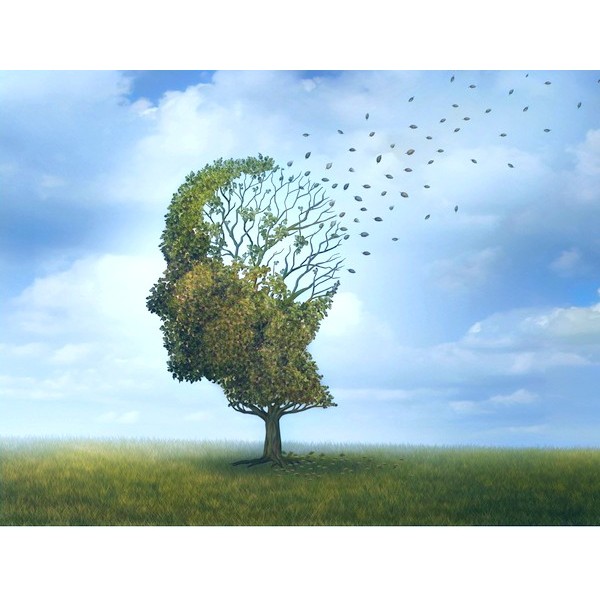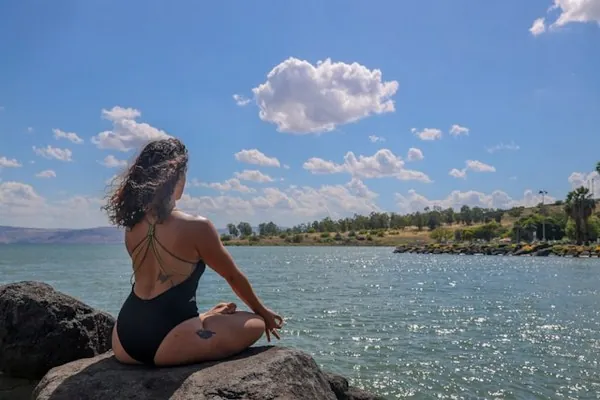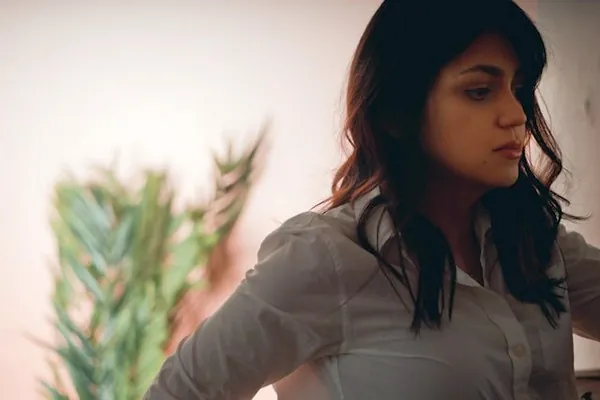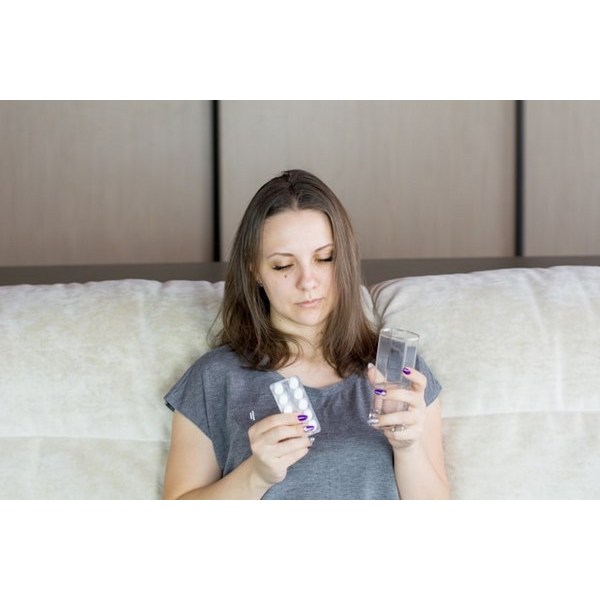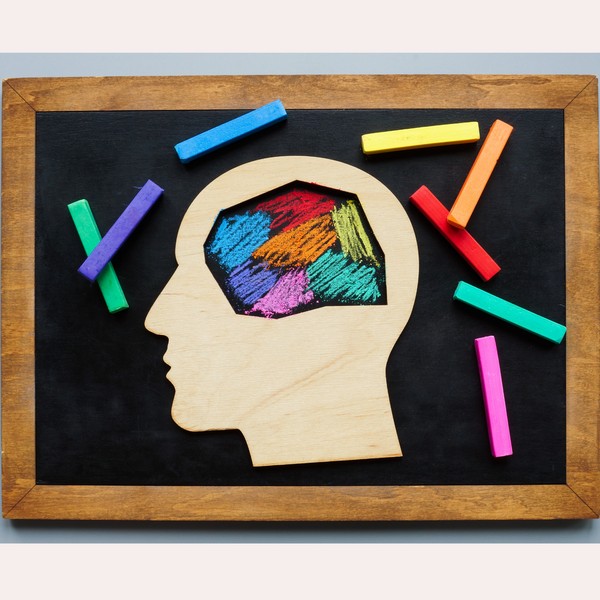Key Highlights
- Emotional healing is a gradual process requiring patience and self-compassion.
- Acknowledge and accept your feelings, and identify sources of emotional pain.
- Embrace vulnerability, cultivate self-compassion, and build a supportive network.
- Engage in mindfulness, meditation, and healthy coping strategies.
- Seek professional help, set boundaries, and celebrate small victories.
Table of Contents
Introduction

Healing emotional wounds, often triggered by life’s challenges, is a transformative journey. Recovery involves self-reflection, embracing vulnerability, and fostering self-compassion.
Despite challenges, focusing on emotional well-being can lead to genuine healing.
Emotional Healing: A Comprehensive Guide
Emotional healing involves recognizing feelings, identifying pain sources, and embracing vulnerability with self-compassion.
1. Acknowledging and Accepting Your Feelings
Emotional healing begins with acknowledging and accepting your feelings. Give yourself permission to feel whatever emotions arise, whether they are positive or negative.
This includes allowing yourself to grieve, be angry, or feel sadness.
One of the keys to acknowledging and accepting your feelings is to be present in the present moment. Instead of pushing your emotions away or trying to suppress them, take the time to sit with them and understand why you are feeling the way you are.
This practice of mindfulness can help you develop a deeper understanding of yourself and your emotional needs, which is essential for the healing process.
2. Identifying the Sources of Emotional Pain
This involves reflecting on past experiences, relationships, and events that may have caused you emotional distress.
Sometimes, emotional pain can stem from past wounds that have never fully healed. These old wounds can be triggered by present-day events and create a cycle of emotional turmoil.
Approach this process with self-compassion and without judgment.
3. Embracing Vulnerability as a Strength

While vulnerability may be seen as a weakness, it is actually a strength that can help you connect with yourself and others on a deeper level.
When you allow yourself to be vulnerable, you are opening yourself up to the possibility of healing and growth. Vulnerability allows you to let go of the walls you’ve built up to protect yourself and to truly experience and express your emotions.
Approach vulnerability with self-compassion and to surround yourself with a supportive network of friends, loved ones, or mental health professionals who can provide a safe space for you to express yourself.
4. Cultivating Self-Compassion and Forgiveness
Cultivating self-compassion and forgiveness is an essential part of the emotional healing process.
- Practice self-acceptance: Accept yourself as you are, including your flaws and imperfections. Treat yourself with kindness and understanding.
- Challenge self-critical thoughts: Notice negative or self-critical thoughts and replace them with positive and compassionate ones. Remind yourself that everyone makes mistakes and that you deserve compassion.
- Practice forgiveness: Forgive yourself for any perceived mistakes or shortcomings. Let go of any grudges or resentments you may be holding onto and forgive others who have hurt you.
- Seek support: Surround yourself with a supportive network of friends, loved ones, or mental health professionals who can provide guidance and understanding as you navigate the healing process.
5. Building a Supportive Network

Having a strong support system can provide you with the love, understanding, and guidance you need as you navigate the healing process.
- Reach out to trusted friends and loved ones: Share your feelings and experiences with people you trust and feel comfortable opening up to. Let them know what you need from them in terms of support and understanding.
- Seek professional help: working with mental health professionals who specialize in emotional healing. They can provide you with the tools and techniques you need to navigate the healing process and offer a safe and nonjudgmental space for you to express yourself.
- Join support groups or therapy groups: Connect with others who are going through similar experiences by joining support groups or therapy groups. These groups can provide a sense of belonging and understanding as you heal.
6. Engaging in Mindfulness and Meditation
Mindfulness involves bringing your attention to the present moment and observing your thoughts and feelings without judgment.
Meditation is a practice that involves focusing your attention and eliminating the stream of thoughts that often occupy your mind.
These practices can help you process and release emotional pain, reduce anxiety and stress, and improve your overall well-being.
- Set aside time each day for mindfulness and meditation practices. Start with just a few minutes and gradually increase the duration as you become more comfortable.
- Find a quiet and comfortable space where you can practice mindfulness and meditation without distractions.
- Use guided meditation apps or videos to help you get started if you’re new to the practice.
- Experiment with different mindfulness and meditation techniques to find what works best for you.
7. Seeking Professional Help When Needed

Seeking professional help is an important step in the emotional healing process, especially if you’re struggling to navigate the journey on your own.
Mental health professionals can provide you with the guidance and support you need as you heal from emotional wounds.
- Persistent feelings of sadness, anxiety, or hopelessness that interfere with your daily life.
- Difficulty functioning at work, school, or in relationships.
- Thoughts of self-harm or suicide.
- Inability to cope with past traumatic events.
- Feelings of being overwhelmed or stuck in the healing process.
A mental health professional can provide you with the tools and techniques you need to navigate the healing process and offer a safe and nonjudgmental space for you to express yourself.
8. Implementing Healthy Coping Strategies
Healthy coping strategies can help you navigate difficult emotions, reduce stress, and promote overall well-being.
- Engage in regular exercise: Physical activity can help reduce stress and boost your mood. Find activities that you enjoy, such as walking, swimming, or yoga, and make them a part of your daily routine.
- Practice relaxation techniques: Deep breathing exercises, progressive muscle relaxation, and guided imagery can help you relax and reduce anxiety.
- Express yourself creatively: Engaging in creative activities such as painting, writing, or playing music can provide an outlet for emotions and promote healing.
- Practice self-care: Take time to care for yourself by engaging in activities that bring you joy and relaxation, such as taking a bath, reading a book, or spending time in nature.
- Seek support from loved ones: Lean on your support network for guidance, understanding, and love. Engage in meaningful conversations and allow yourself to be vulnerable with those you trust.
9. Setting Boundaries for Self-Preservation
Boundaries help you establish and maintain healthy relationships and protect your emotional well-being.
- Identify your needs and priorities: Take the time to reflect on what you need in order to heal and prioritize your well-being.
- Communicate your boundaries clearly: Clearly communicate your boundaries to others and let them know what you are comfortable with and what you are not.
- Be consistent: Consistently enforce your boundaries and be firm in your decisions to protect your emotional well-being.
- Be assertive: Assertively communicate your boundaries and stand up for yourself if someone tries to violate them.
- Practice self-care: Take care of yourself by engaging in activities that promote your well-being and prioritize your own needs.
10. Celebrating Small Victories on the Healing Journey
Recognizing and celebrating the progress you have made can provide you with motivation and encouragement to continue on your healing path.
- Acknowledge your progress: Take the time to reflect on how far you have come and the steps you have taken towards healing. Congratulate yourself for the progress you have made.
- Reward yourself: Treat yourself to something special as a reward for your hard work and progress. This can be as simple as enjoying a nice meal, taking a day off from work, or indulging in a favorite hobby.
- Share your victories with others: Share your progress with your support network and let them celebrate with you. Their encouragement and support can be a source of motivation and inspiration.
Techniques and Practices for Emotional Recovery

These techniques and practices provide you with the tools and resources you need to navigate and overcome emotional pain.
Mindfulness in Daily Life
Mindfulness involves being fully present in the moment and observing your thoughts, feelings, and sensations without judgment.
- Set aside time each day for mindfulness practice. This can be as little as a few minutes or as long as an hour, depending on your schedule and preferences.
- Practice mindful eating by savoring each bite and paying attention to the flavors, textures, and sensations of the food.
- Engage in mindful movement, such as yoga or tai chi, which can help you connect with your body and promote relaxation.
- Use mindfulness apps or guided meditations to support your practice and provide guidance.
Creative Expression in Healing
Engaging in creative activities such as painting, writing, or playing music allows you to express and process your emotions in a safe and nonjudgmental way.
- Provides an outlet for emotions: Creative expression allows you to channel your emotions into a tangible form, providing relief and release.
- Promotes self-discovery: Engaging in creative activities can help you gain insight into your emotions, thoughts, and experiences, promoting self-discovery and healing.
- Encourages mindfulness: Creativity often involves being fully present in the moment, which can promote mindfulness and help you connect with your emotions on a deeper level.
- Fosters self-expression and empowerment: Creative expression allows you to communicate your emotions and experiences in a way that is unique to you, fostering a sense of self-expression and empowerment.
Physical Activity as a Tool for Emotional Release

Regular exercise not only benefits your physical health but also has a positive impact on your emotional well-being.
- Releases endorphins: Exercise stimulates the release of endorphins, which are natural mood-boosting chemicals that can help reduce stress, anxiety, and depression.
- Provides a distraction: Physical activity can serve as a healthy distraction from negative thoughts and emotions, allowing you to focus on the present moment and promote a sense of well-being.
- Promotes self-care: Engaging in regular exercise is a form of self-care that demonstrates love and compassion for your body and mind.
- Offers a sense of accomplishment: Setting and achieving fitness goals can provide a sense of accomplishment and boost self-esteem, contributing to your overall emotional well-being.
Healthy Lifestyle
A healthy lifestyle encompasses various aspects of self-care, including nutrition, sleep, and stress management.
- Nourishes your body and mind: Eating a balanced diet, getting adequate sleep, and managing stress can provide your body and mind with the fuel and support they need for healing.
- Reduces stress: Practicing stress management techniques such as deep breathing, mindfulness, and relaxation exercises can help reduce stress levels and promote emotional well-being.
- Enhances overall well-being: A healthy lifestyle can improve your overall physical and mental well-being, which is essential for the healing process.
- Builds resilience: Taking care of your physical health can help build resilience and provide you with the strength and energy you need to navigate emotional challenges.
Overcoming Common Challenges in Emotional Healing
Emotional healing is not without its challenges. Setbacks, loss, grief, and past traumas can all pose obstacles on the healing journey.
However, with resilience and the right strategies, it is possible to overcome these challenges and continue on the path to emotional healing.
Setbacks with Resilience
Setbacks are a normal part of the emotional healing process. They can be discouraging and make you feel like you’re not making progress, but remember that setbacks are not permanent.
- Practice self-compassion: Be kind and understanding with yourself when setbacks occur. Remember that healing is a journey, and setbacks are a natural part of that journey.
- Reflect on what you’ve learned: Use setbacks as an opportunity for growth and self-reflection. Identify what triggered the setback and what you can do differently moving forward.
- Seek support: Lean on your support network for guidance and understanding during setbacks. Reach out to friends, loved ones, or mental health professionals who can offer support and encouragement.
- Stay focused on your goals: Remind yourself of your goals and the progress you have made. Use setbacks as fuel to propel you forward and continue on your healing journey.
Dealing with Loss and Grief

Loss and grief are painful experiences that can deeply impact our emotional well-being. Whether it’s the loss of a loved one, a breakup, or the end of a significant relationship, give yourself time and space to grieve.
- Allow yourself to grieve: Give yourself permission to feel and express your emotions. This may involve crying, journaling, or talking to a trusted friend or therapist.
- Practice self-care: Take care of yourself physically, emotionally, and mentally during the grieving process. This may involve getting enough sleep, eating nutritious meals, and engaging in activities that bring you comfort and joy.
- Seek support: Lean on your support network for guidance and understanding. Surround yourself with loved ones who can provide comfort and support as you navigate the grieving process.
- Honor your loved one’s memory: Find ways to honor and remember your loved one. This may involve creating a memorial, participating in rituals or traditions, or engaging in activities that were meaningful to them.
Confronting and Releasing Deep-Seated Fears
Deep-seated fears can hold us back from healing and prevent us from moving forward on our healing journey.
- Identify your fears: Take the time to reflect on your fears and identify what is holding you back. This may involve journaling, talking to a therapist, or engaging in self-reflection.
- Challenge your fears: Once you have identified your fears, challenge them by questioning their validity. Ask yourself if they are based on reality or if they are simply limiting beliefs.
- Take small steps: Confronting fears can be overwhelming, so start by taking small steps outside of your comfort zone. Gradually expose yourself to situations that trigger your fears and practice facing them head-on.
- Seek support: Lean on your support network for guidance and encouragement as you confront your fears. Surround yourself with people who believe in you and can provide the support you need.
Breaking Free from Past Traumas
Past traumas can have a profound impact on our emotional well-being and can continue to affect us long after the event has occurred.
- Seek professional help: Working with a mental health professional who specializes in trauma can provide you with the tools and support you need to heal from past traumas.
- Practice self-compassion: Be kind and understanding with yourself as you navigate the healing process. Healing from trauma takes time and patience.
- Engage in trauma-focused therapies: Trauma-focused therapies such as cognitive-behavioral therapy (CBT) and eye movement desensitization and reprocessing (EMDR) can help you process and release the traumatic memories and emotions associated with past traumas.
- Surround yourself with support: Lean on your support network for guidance and understanding as you break free from past traumas. Surround yourself with people who believe in your healing journey and can provide the support you need.
Conclusion
In conclusion, emotional healing is a profound journey that requires acknowledgment, acceptance, and self-compassion. Celebrate small victories along the way and implement healthy coping strategies to nurture your well-being. Mindfulness, creative expression, and physical activity can aid in the healing process. Overcoming challenges like setbacks and grief is part of the journey towards wholeness. If you find yourself struggling, don’t hesitate to seek professional help. Your healing is valid, and with time, patience, and self-care, you can navigate through emotional wounds towards a brighter, more empowered future.
Frequently Asked Questions
How Long Does Emotional Healing Take?
Emotional healing is a process that takes time and varies for each individual. The healing process is unique to each person and depends on various factors, including the individual’s resilience, support system, and the nature of the emotional wounds. Practice patience and self-compassion and avoid setting unrealistic expectations as you navigate the healing process.
Can Emotional Wounds Fully Heal?
While emotional wounds may never fully disappear, they can heal to the point where they no longer have a significant impact on your emotional well-being. With time, effort, and the right support, emotional wounds can become scars that serve as reminders of strength and growth.
What If I Feel Stuck in My Healing Process?
Feeling stuck is a common experience in the healing process, but there are strategies you can use to move forward. Seek support from a therapist or counselor who can provide guidance and offer strategies for overcoming obstacles. Remember that healing is a journey, and it’s okay to ask for help along the way.
How Can I Support Someone Going Through Emotional Healing?
Supporting someone going through emotional healing requires compassion, understanding, and patience. Listen actively, offer a nonjudgmental space for them to express their feelings, and provide support in whatever way they need. Encourage them to seek professional help if necessary and be a source of comfort and encouragement throughout their healing journey.
Is It Normal to Feel Worse Before Getting Better?
Feeling worse before getting better is a common experience in the healing process. As you confront and process difficult emotions and memories, it’s not uncommon to experience temporary discomfort or an increase in emotional turbulence. This is a normal part of the healing journey and can be a sign that progress is being made.
What Are the Signs of Emotional Healing?
Signs of emotional healing can vary from person to person, but some common indicators include increased self-awareness, improved mood and overall well-being, a greater ability to cope with difficult emotions, and a sense of peace and clarity. These signs may manifest gradually over time as you continue on your healing journey.
Supporting Mental Health with Gut Health
Key Takeaways Gut-Brain Connection: Gut health is directly linked to mental wellbeing through the gut-brain axis. Probiotics: Beneficial bacteria that help regulate mood and support…
Parkinson’s Disease : Symptoms, Causes & Treatment
Key Takeaways Parkinson’s disease is a progressive neurological disorder that affects movement and coordination. Oxidative stress and excess iron are significant factors in the progression…
Dementia: Causes, Symptoms, and Management
Key Takeaways: Dementia involves a decline in cognitive function affecting memory, thinking, and daily life. Common causes include genetic factors, aging, and certain medical conditions….
Emotional Freedom Technique (EFT): Tap to relieve stress
Key Highlights Learn about the origins and principles of Emotional Freedom Technique (EFT) for stress relief. Understand the science-backed mechanisms of how EFT works on…
Reduce Stress through Pet Therapy
Key Highlights Pet therapy, or animal-assisted therapy, boosts health. Interacting with animals lowers cortisol, blood pressure, and heart rate. Therapy, service, and companion animals are…
Alzheimer’s Disease: Symptoms, Causes, Treatment
Key Takeaways Alzheimer’s disease is a progressive neurodegenerative disorder affecting memory, thinking, and behavior. Oxidative stress, including from excess iron, plays a significant role in…
GABA (gamma-aminobutyric acid)
Key Takeaways GABA is a neurotransmitter that helps calm the nervous system. Low GABA levels can lead to anxiety, stress, and sleep problems. Natural precursors…
Mental Benefits of Learning a New Language
Key Takeaways: Enhances brain volume and memory. Improves cognitive flexibility, multitasking, and executive functions. Delays cognitive decline and boosts emotional intelligence. Increases empathy, cultural awareness,…
Say Goodbye to Depression with Natural Remedies
Key Takeaways Regular exercise, sufficient sleep, and a diet full of bioavailable nutrients support mental health. Spending time in nature, like forest bathing and gardening,…
Anxiety: Causes, Symptoms, and Management
Key Takeaways: Anxiety can disrupt daily life when it becomes overwhelming. Common symptoms include restlessness, rapid heartbeat, and difficulty concentrating. Causes include stress, genetics, and…
Fight, Flight, Freeze, Fawn: Stress Response Examined
Key Takeaways The stress response includes four primary reactions, each serving as a survival mechanism. The fight response involves confronting the threat, often with aggression…


